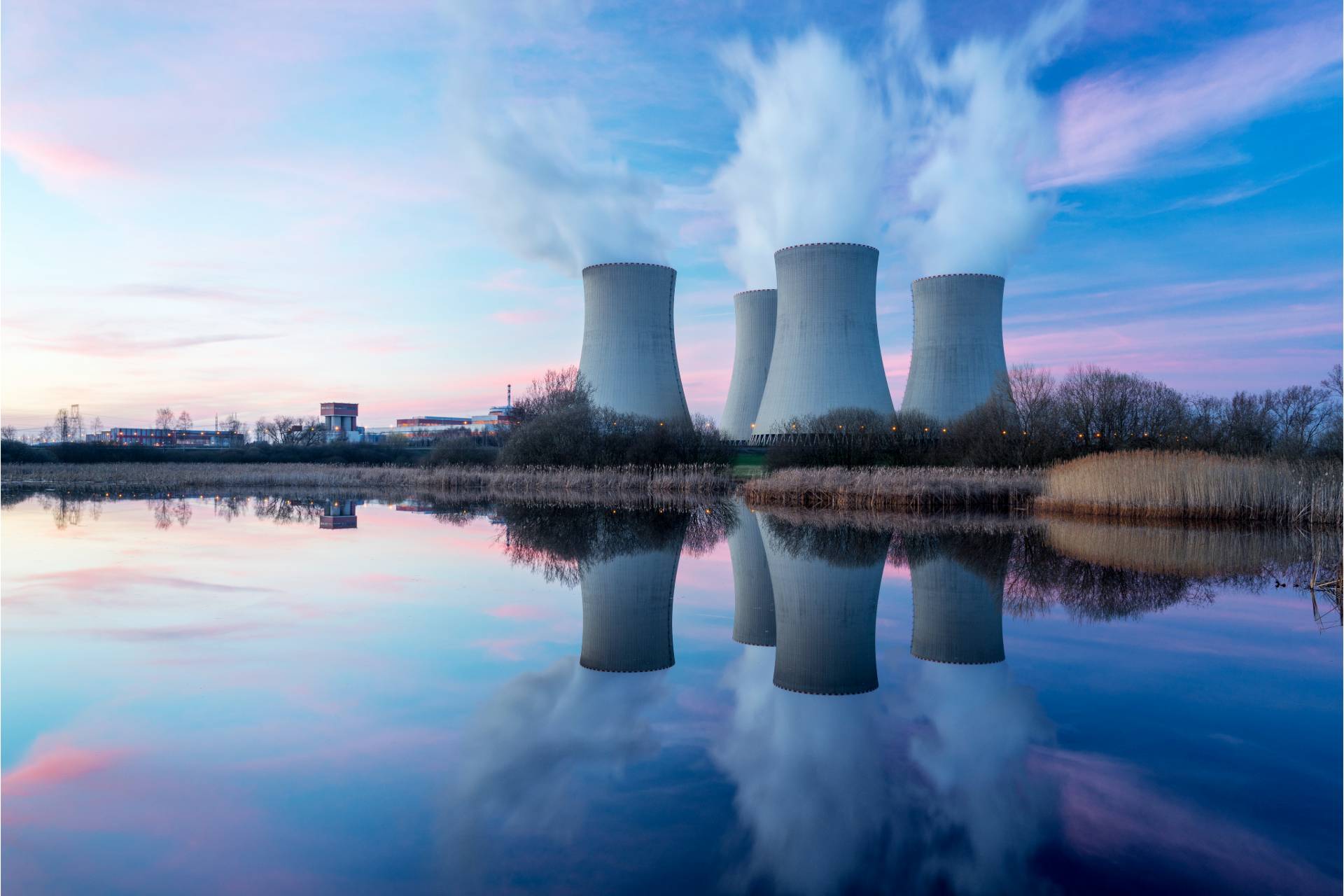The UK government has announced its Powering Up Nuclear roadmap to guide nuclear’s development. The plans lay out the biggest expansion of nuclear power in over 70 years. So, what’s in the plan and how will it affect Britain’s energy security and economy? In this article, we’re breaking down everything you need to know about the announcement.
The announcement in a nutshell
In hopes of creating a ‘vision for a dynamic nuclear sector’, the government released its Civil Nuclear Roadmap. The roadmap outlines how the UK will increase its nuclear generation supply by up to 4 times to 24 (GW) by 2050, which is enough to provide a quarter of the UK’s electricity needs.
The plans include next steps for exploring a GW-scale power plant as big as Sizewell in Suffolk or Hinkley in Somerset, which are capable of powering 6 million homes each, along with funding for alternative fuel options and upskilling green labour.
Plan to launch HALEU fuel programme
The government will invest up to £300 million in UK production of the fuel required to power high-tech new nuclear reactors, known as HALEU, currently only commercially produced in Russia.
As the first country in Europe to launch a HALEU programme, the UK’s North West production hub will provide a form of uranium fuel, with the first plant aiming to be operational early in the next decade. This builds on the ambition to return uranium conversion to the Springfields nuclear fuel site, both of which are critical to pushing Putin out of the global market.
Small Modular Reactor (SMR) competition to launch soon
While no specific dates were given, the government has said that companies short-listed in the SMR competition will soon be invited to tender. The SMR competition was first announced in April 2023 by Chancellor Jeremy Hunt. As a smaller cousin of traditional nuclear sites, SMRs offer swifter construction times as they can be mass produced in factories and are of a much smaller size.
Though, some still doubt the green credentials of nuclear as being environmentally sustainable, given the long build time for nuclear sites and its radioactive biproduct. It can take anywhere from 5-10 years to build a nuclear plant after planning and permissions, with Hinkley Point C’s construction costing up to £33bn.
Funding allocated for green skills in nuclear sector
Analysis by the Nuclear Skills Strategy Group suggests that to reach up to 24GW, the civil and defence nuclear workforce will need to double over the next 20 years – supporting around 80,000 additional skilled jobs across the UK.
An additional £10 million in funding will be put towards upskilling and education around producing advanced nuclear fuels in the UK as well as how to develop the sites. The roadmap also includes a government ambition to secure 3 – 7GW worth of investment decisions every 5 years from 2030 to 2044 on new nuclear projects.
Of the Civil Nuclear Roadmap, Prime Minister Rishi Sunak said, “This will ensure our future energy security and create the jobs and skills we need to level up the country and grow our economy.”
The government also announced a consultation to understand how government can support investment in advanced nuclear technologies and enable high value projects to be taken forward. The consultation will close on 4 April.
Will nuclear light up the UK?
While the government has announced an ambitious roadmap towards a nuclear-strong future, only time will tell how successful its plans are. In the meantime, watch this space for up-and-coming nuclear news.
Have further questions or a request for more information? Get in touch for a no-obligation chat with our industry-leading experts at Sustainable Energy First.













